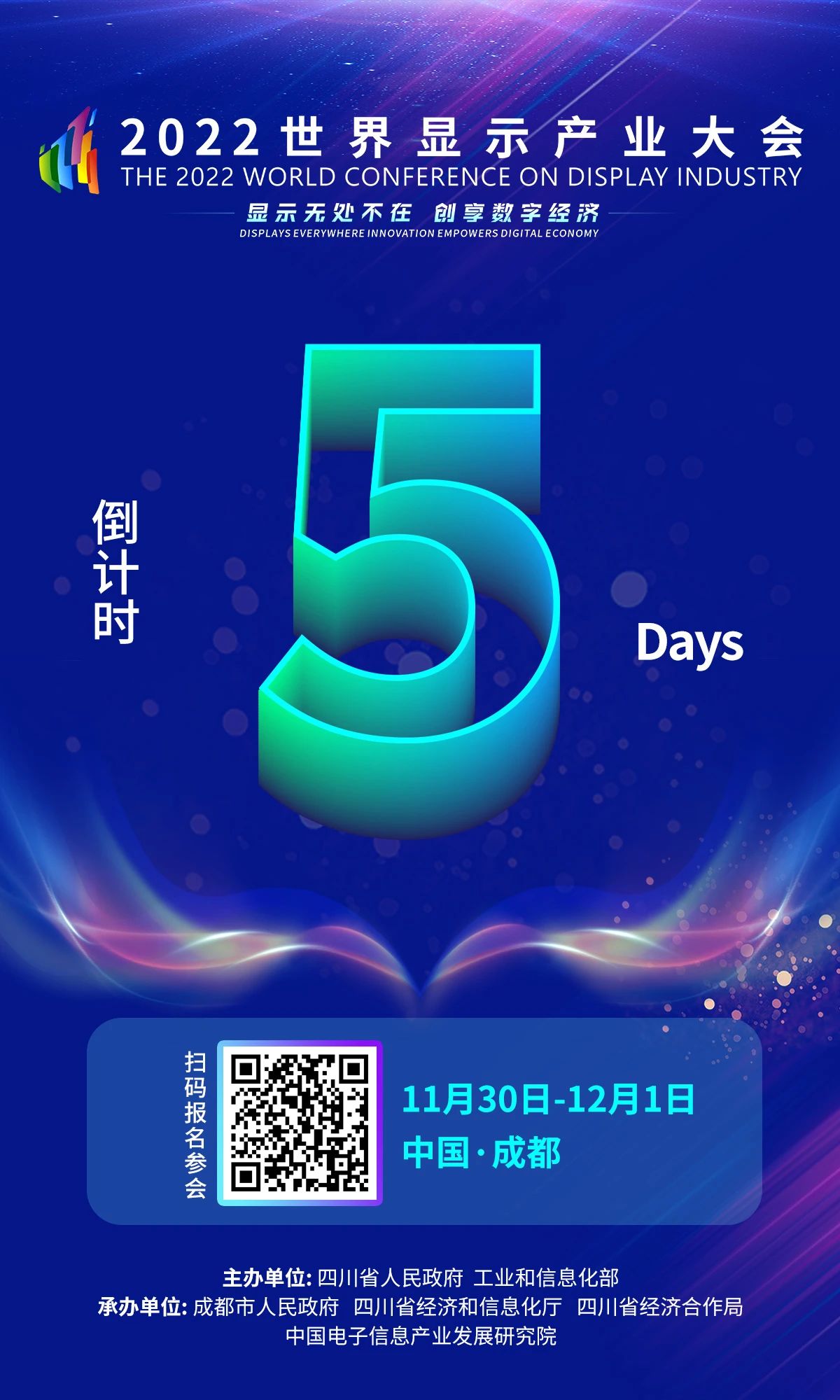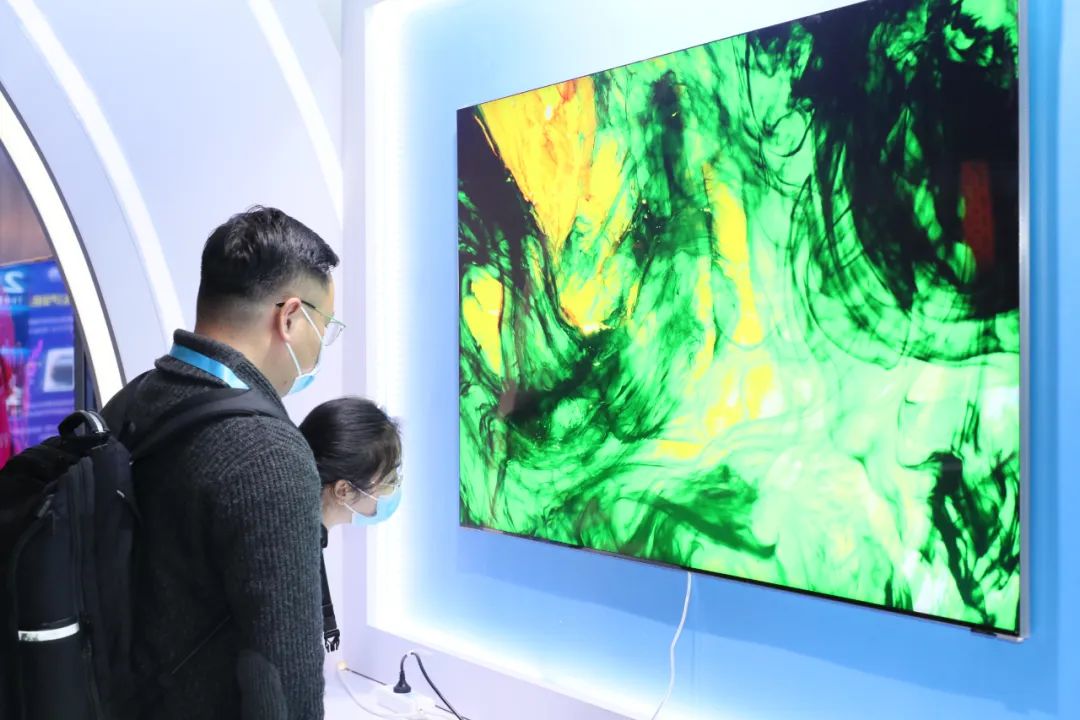
Chinese LCD manufacturers have formed the world’s leading competitiveness
Tue Nov 29 20:41:07 CST 2022

After nearly ten years of growth, my country’s LCD panel industry has successfully achieved a leapfrog development from “following”, “running together” and then “leading”, becoming the most important growth pole of the world’s display industry. Today, liquid crystal display technology is still developing towards a higher-end, more sophisticated, and more extreme visual experience. After a downward cycle that lasted more than a year, the price of LCD panels is expected to stabilize.

China has achieved absolute dominance.
More than ten years ago, BOE, TCL Huaxing, Shenzhen Tianma and other mainland Chinese panel manufacturers successively invested in the construction of LCD panel production lines. As a typical representative, BOE has successively invested in the construction of the first 5th generation line and 8.5th generation line in mainland China, and the world’s first 10.5th generation line. As of 2016, there are 25 LCD panel production lines in mainland China, with a cumulative investment of more than 400 billion yuan. In 2017, the shipments of LCD panels in mainland China surpassed South Korea for the first time, and jumped to No. 1 in the world. So far, the LCD industry has entered the “China Moment”.
Up to now, according to incomplete statistics, the number of LCD/AMOLED panel production lines announced in mainland China has increased to more than 60, with a total investment of more than 1 trillion yuan. At present, China has achieved an absolute advantage in TFT-LCD technology. Chinese manufacturers have formed world-leading competitiveness in terms of technology, products, market share, cost, and efficiency in the LCD field, accounting for more than 70% of the global market.
TFT-LCD technology is currently the most mature and mainstream technology with the most complete industrial chain among various display technologies. According to data from the Liquid Crystal Branch of the China Optics and Optoelectronics Industry Association: In 2021, the global TFT-LCD display device (panel) investment capacity will be about 319 million square meters, a year-on-year increase of 10.5%; demand will be about 238 million square meters, a year-on-year increase of 2.8%. In 2021, my country’s TFT-LCD display device (panel) investment capacity will be about 203 million square meters, a year-on-year increase of 23.5%; demand will be about 155 million square meters, a year-on-year increase of 17.3%; capacity conversion efficiency will be 76.4%, which is the highest level in the world.
More advanced technology.
In recent years, TFT-LCD technology has developed rapidly. Great breakthroughs have been made in terms of contrast, resolution, and color gamut. Many display parameters are close to the visual limit of the human eye; technically, TFT backplane charging rate, liquid crystal Material response speed, high-speed data processing and transmission and other problems. BOE launched the high-end LCD display solution ADS Pro, which has achieved a series of important innovative breakthroughs in subdivided technology directions such as full-view image quality, high refresh rate and healthy display. BOE’s 576Hz refresh rate 4K TV display products adopt BOE’s self-developed screen and super frequency multiplication technology, which can achieve an ultra-high contrast ratio of 3000:1, which greatly improves the fineness and fluency of the picture. BOE’s notebook display with the world’s highest refresh rate of 500Hz+ adopts oxide TFT technology and fast-response liquid crystal technology to achieve a smooth dynamic effect without smearing.
TCL,CSOT challenged the difficult 8K TFT-LCD backplane 4Mask process with the world’s first ultra-high-resolution, high-refresh rate LCD display using the 4Mask process—75-inch 8K 4Mask 120Hz a-Si 1G1D MLED TV. Under the premise of ensuring perfect image quality performance, the process cost is greatly reduced, and it is extremely cost-effective. TCL CSOT’s 8.6th generation oxide semiconductor new display device production line project (t9) was put into production in September this year. It is the first high-generation line in China that specializes in the production of high-end IT products and professional display LCD panels. It adopts HFS and HFS independently developed by TCL CSOT. High-mobility oxide technology can produce display panels with larger sizes, higher refresh rates, and higher resolutions.
LCD technology is mature and its performance is stable, and it has already passed the test of various application scenarios. At the same time, LCD display performance is still improving. Technologies such as dynamic backlighting, stacked screens, 8K high-definition, narrow bezels, and custom-shaped tailoring can meet the needs of many terminal products, and the cost advantage is extremely obvious. Ouyang Zhongcan, an academician of the Chinese Academy of Sciences, said that TFT-LCD has obvious advantages and cannot be replaced in the short term.
In terms of VR display, judging from the VR headsets released in 2022, Fast LCD technology is still the first choice of most manufacturers due to its high cost performance. In particular, Meta’s Quest Pro still chooses to use Fast LCD under the high-end positioning of $1,499, which is enough to show that Fast LCD still maintains strong vitality in the field of VR display.
In terms of technology categories, a-Si, LTPS, and Oxide dominate. Data from Sigma Consulting shows that in 2021, global display panel revenue will be US$136.6 billion, a year-on-year increase of approximately 18.2%. The main growth driver comes from the combined effect of a-Si LCD and OLED.
Panel price changes in line with the cycle.
The 13-month panel price increase cycle will come to an end in mid-2021. Since the second half of 2021, panel prices have undergone structural adjustments, TV and IT LCD panel prices have declined to varying degrees, and the panel industry has been in a downward cycle. Since 2022, affected by uncertain factors, terminal demand has declined in stages, LCD panel prices have shown a downward trend, and panel makers have entered a destocking cycle.
“Market cycle fluctuations exist objectively in any industry.” Liang Xinqing, executive vice chairman and secretary-general of the Liquid Crystal Branch of China Optical Optoelectronics Industry Association, said at the beginning of this year. The boom cycle has brought three dominant results to domestic panel companies: first, the production capacity of a large number of new projects invested and reserved in 2018 and 2019 has been fully released; second, profits have reached historical highs; third, integration has further accelerated.
BOE stated in a recent investor relations event that starting from the end of the second quarter of 2022, in order to maintain the healthy development of the industry, the industry generally begins to adjust the utilization rate of production lines. Entering the fourth quarter of 2022, the production capacity supply will be greatly reduced, the oversupply of LCD TV panels will be greatly alleviated, and the inventory of panel factories and brand factories will basically return to a healthy level.
TCL Technology also pointed out in an investor relations event recently that since the beginning of this year, due to the large decline in panel prices in the early stage, the industry’s high-efficiency operation is insufficient, and the utilization rate has begun to undergo a relatively large adjustment from the end of the second quarter of 2022. On this basis, the inventory level of the industry has entered a relatively healthy state from a high state at the end of the second quarter. With the advent of the peak promotion season in the market, demand showed a trend of recovery from the previous quarter. Due to the tight supply and demand in the fourth quarter, there was a structural shortage of inventory, and panel prices stabilized and rebounded. At present, the utilization rate of the industry as a whole is still maintained at a relatively low level, which promotes the development of a healthy and balanced relationship between supply and demand in the market, and the price of large-size panels is recovering steadily.
Li Xiaoyan, a senior TV panel analyst at Sigma Consulting, said that due to the production reduction of panel factories, the global LCD TV panel supply area in the third quarter of 2022 will drop by 20.4% year-on-year, and it is expected to decrease by 21.7% year-on-year in the fourth quarter. The production reduction of panel factories will effectively control the supply in the short term. In the case that the fundamentals of supply and demand have not changed fundamentally, it is particularly important whether leading panel manufacturers can form a joint force and continue to rationally control the global LCD TV panel production capacity in the future.
